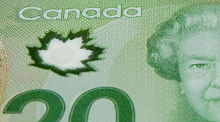
Economic instability in Greece and China as well as a change in the U.S. Federal Reserve Board’s economic policy caused a greater percentage of financial advisors and investors to feel bearish about Canadian and U.S. equities as they headed into the third quarter (Q3), according to the Q3 2015 Advisor and Investor Sentiment Survey conducted by Toronto-based Horizons ETFs Management (Canada) Inc.
The survey asked a group of advisors and investors during the second quarter (Q2) whether their expectations of returns were bullish, bearish or neutral on 13 distinct asset classes for the upcoming calendar quarter. The largest drops in bullish sentiment are found in the responses to questions on key indices such as the S&P/TSX 60 index, the S&P 500 composite index and the Nasdaq-100.
For example, 39% of advisors said they were bullish on the S&P/TSX 60 index, down from 54% in Q2. Investors were even less optimistic with 29% saying they were bullish on the index in Q3, a drop from 42% in Q2. This is one of the largest sentiment disparities between advisors and investors in the survey. The S&P/TSX 60 index was down by 2.5% in Q2.
“Instability in China and Greece have dampened the optimism for the Canadian market we would normally see; the Canadian economy is heavily reliant on Chinese demand for oil, and without that rising, investors will remain overly cautious,” says Howard Atkinson, president of Horizons ETFs, in a statement. “Advisors as usual are more bullish than investors due to their ability to tune out negative news headlines and stay focused on longer-term trends.”
When looking at the sentiment surrounding the S&P 500, 57% of advisors were bullish about index prospects for Q3, down from 68% who felt this way heading into Q2. Investor bullishness also fell to 37% from 48% quarter-over-quarter. The S&P 500 was down by 0.2% in Q2.
Similarly, both advisors and investors were increasingly bearish about the Nasdaq 100. Of the advisors surveyed, 57% said they felt bullish about the index for Q3, down from 65% in Q2. Investor bullishness for this index also fell for Q3, to 42% from 47% quarter-over-quarter. The Nasdaq 100 rose by 1.5% in Q2.
“The drop in bullishness we see for the U.S. this quarter results from the Fed’s pullback of quantitative easing and investors and advisors being cautious of how the market will perform now that it’s standing on its own two feet,” Atkinson explains.
The sentiment regarding the prospects for energy, natural gas and crude oil were less dramatic, with advisors and investors generally maintaining their outlook from Q2.
Specifically, 42% of advisors said they were bullish about the S&P/TSX capped energy index for Q3, an increase of 1% quarter-over-quarter, while investor sentiment remained flat, with 33% feeling bullish. During Q2, the index fell 5.5%.
Investors and advisors expressed similar levels of bullish sentiment towards crude oil prices for Q3 with 41% of advisors and 42% of investors expecting prices to rise.
Bullishness for natural gas rose slightly for advisors, with 28% of advisors feeling bullish for Q3, compared with 25% who stated this in Q2. The number of investors feeling bullish rose more dramatically, to 31% in Q3 from 22% in Q2.
These expectations for crude and natural gas played into sentiment for the Canadian dollar (C$) vs the U.S. dollar, the research states. The percentage of advisors bearish on the loonie rose to 53% from 41% quarter-over-quarter while investor bearishness on the C$ remained flat, at 44%. The loonie rose by 1.5% against the U.S. dollar during Q2. (However, it should be noted that the survey was conducted in Q2, before the Bank of Canada’s cut to the interest rate on July 15 resulted in a significant drop to the loonie.)
“The U.S. dollar has benefited from global uncertainty, as many investors view the greenback as a flight to safety,” Atkinson says in the statement. “After a rout in oil prices, there is skepticism that the Canadian dollar will trend above 80¢ this year.”